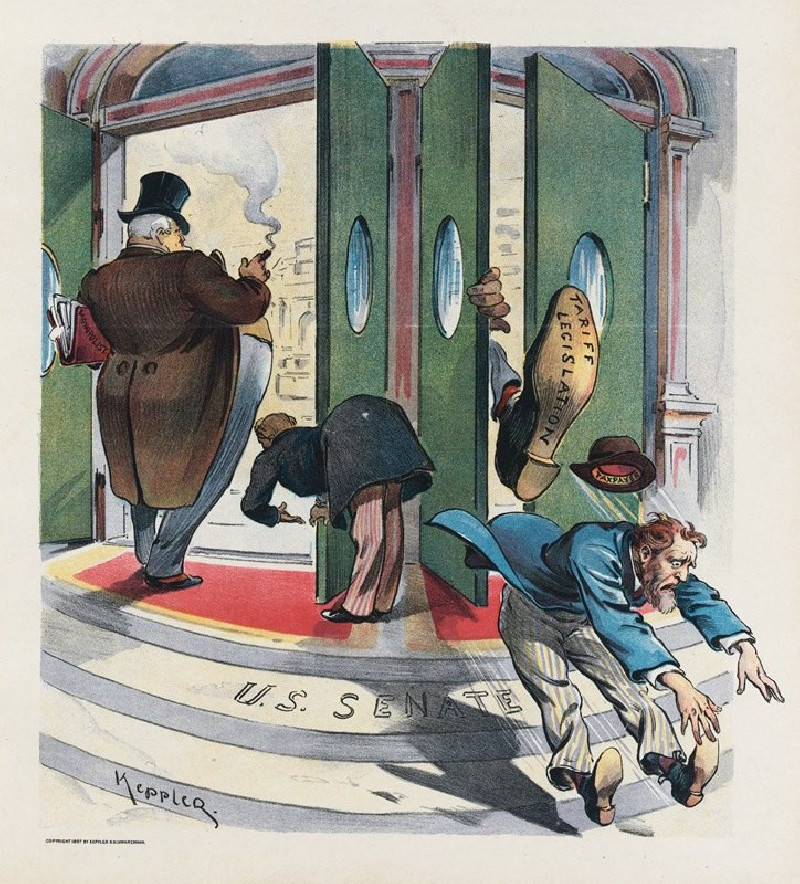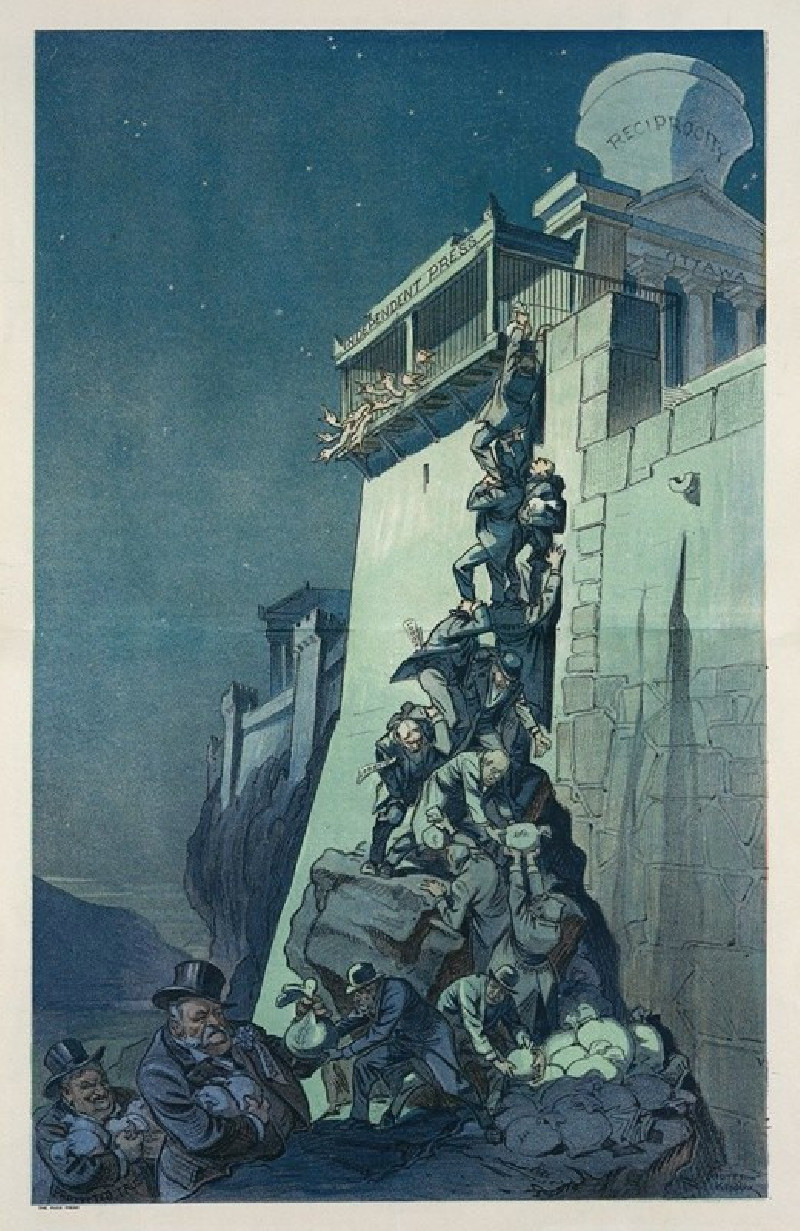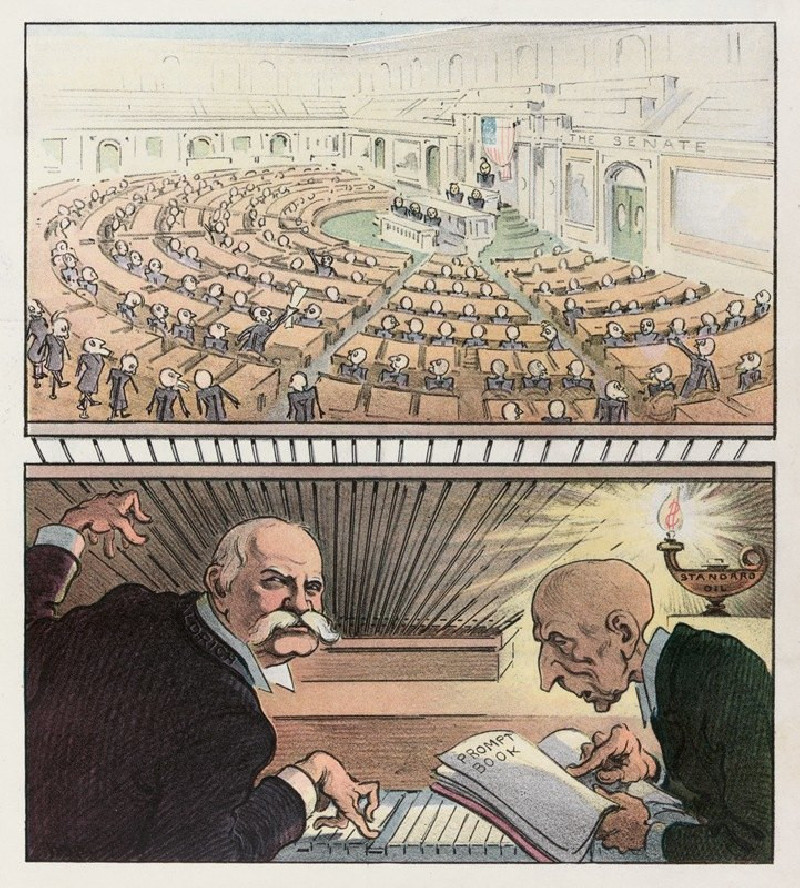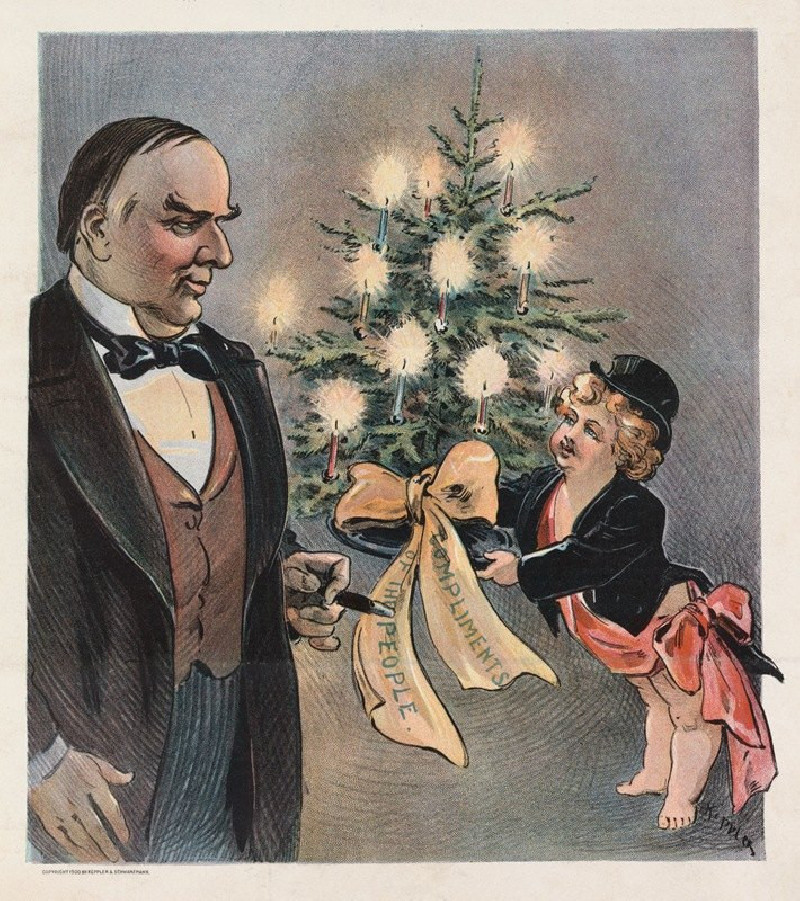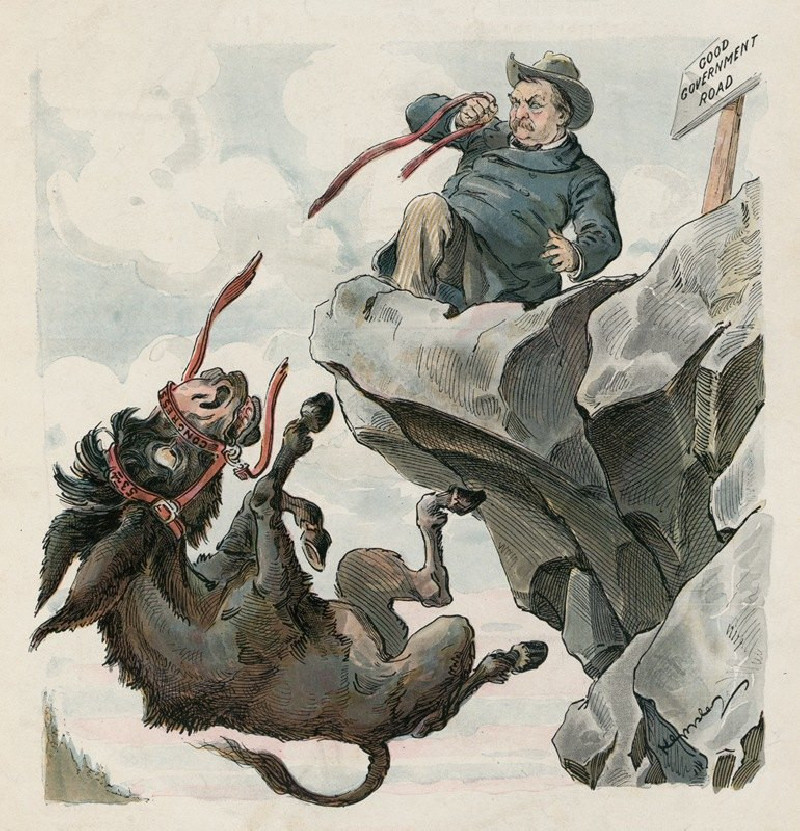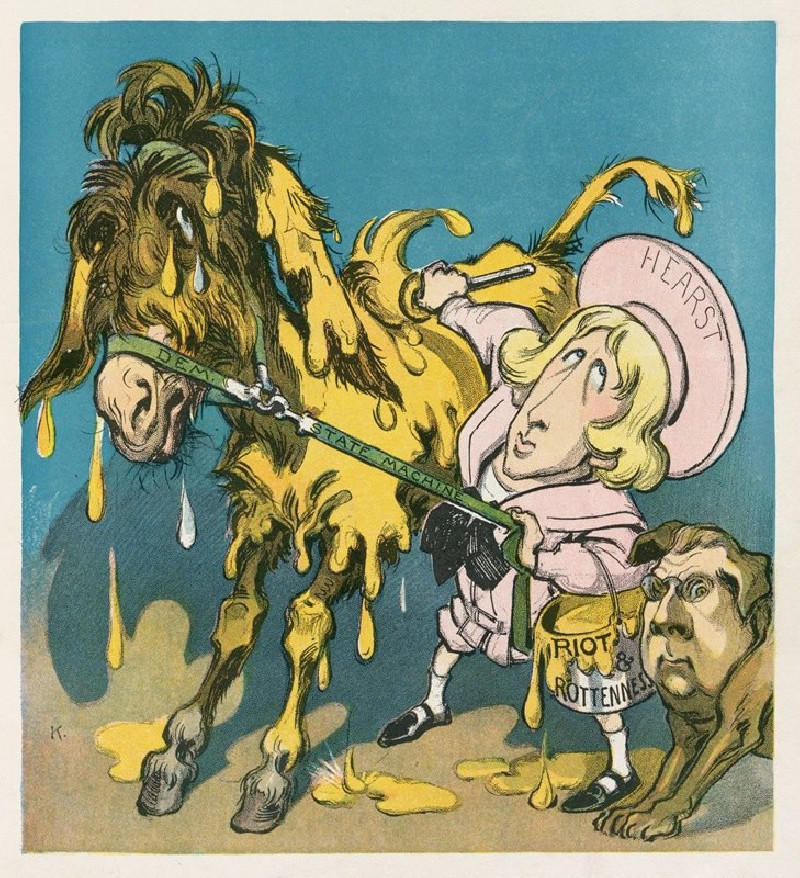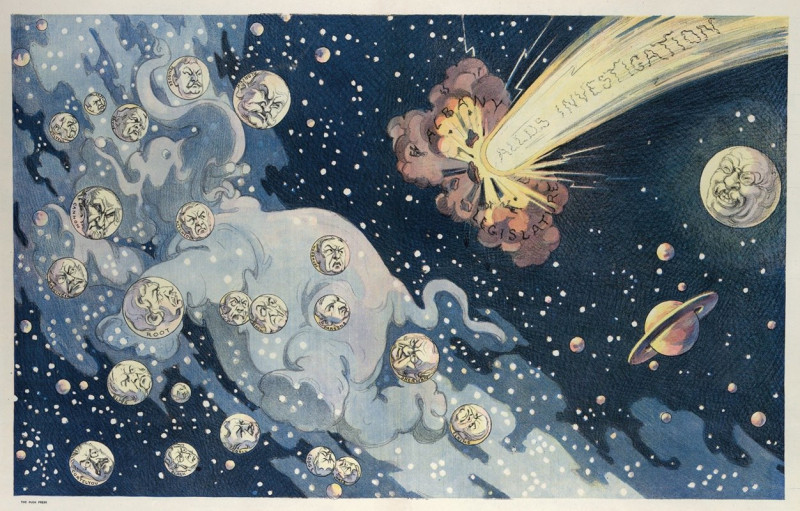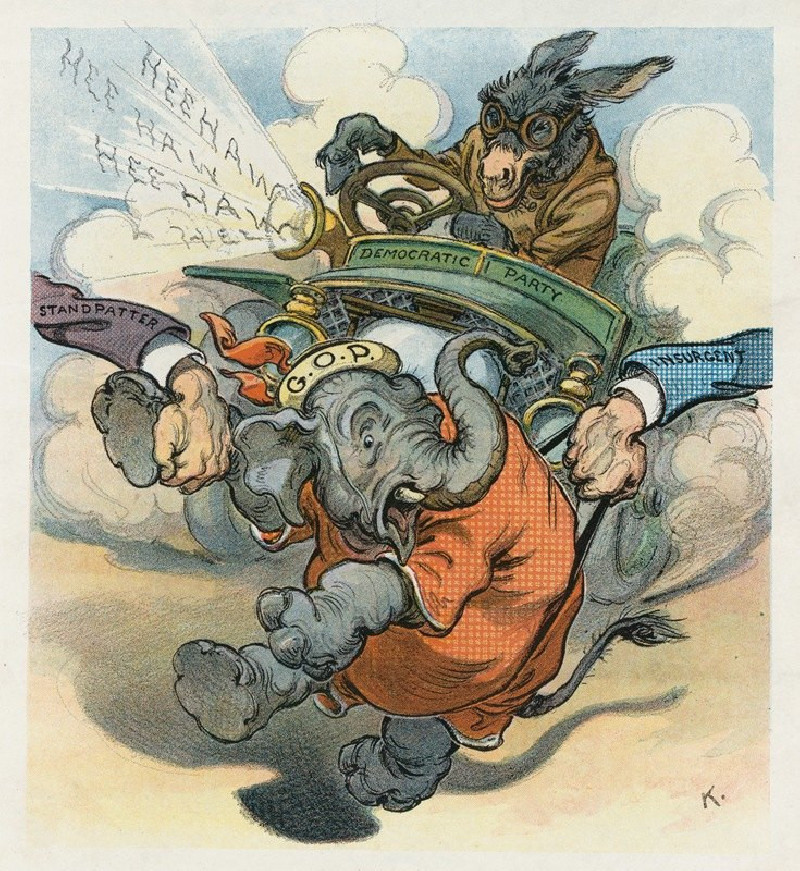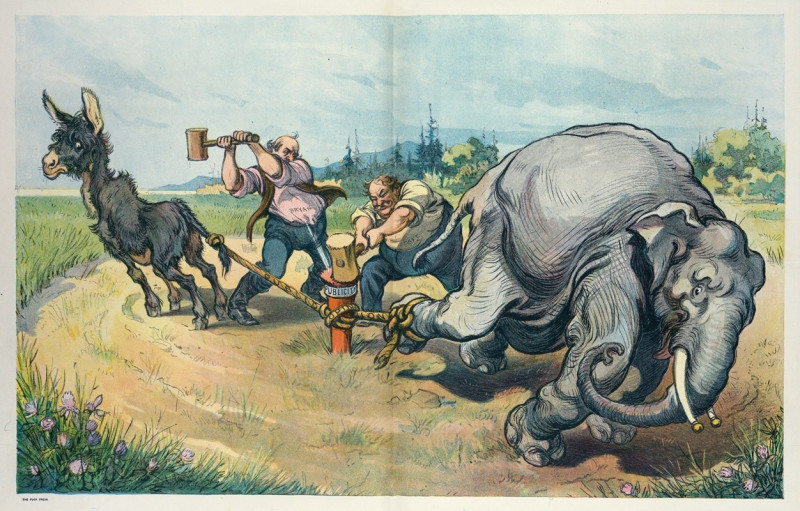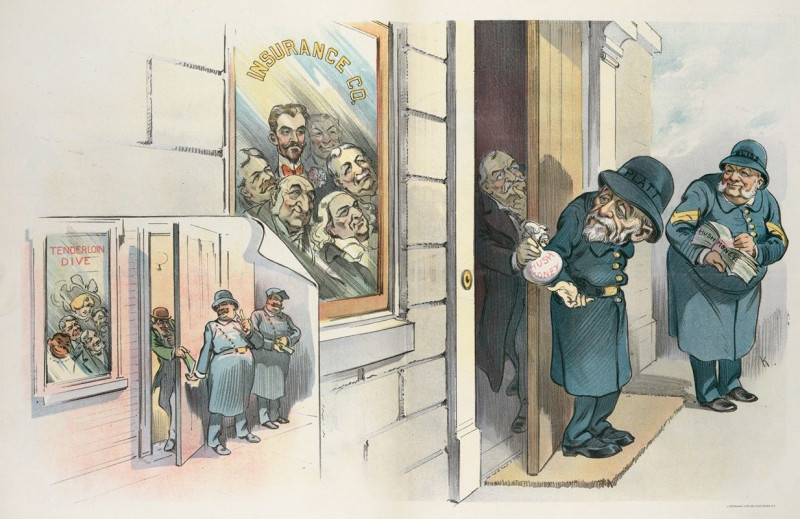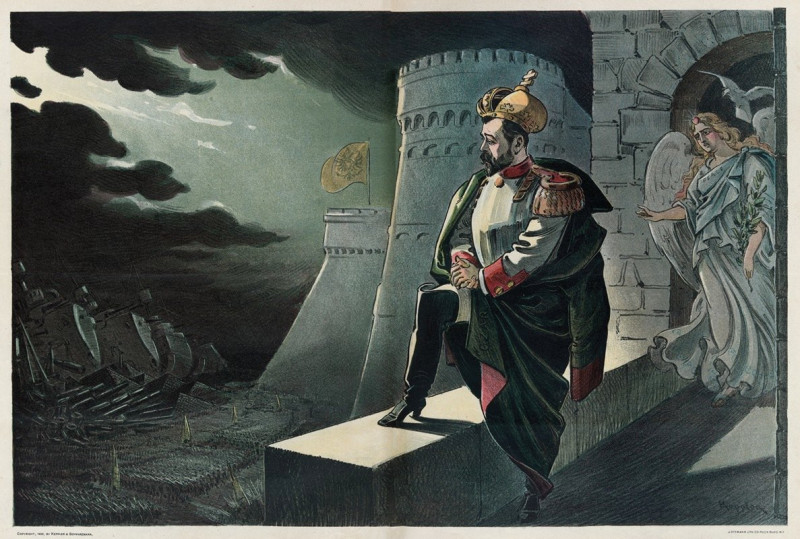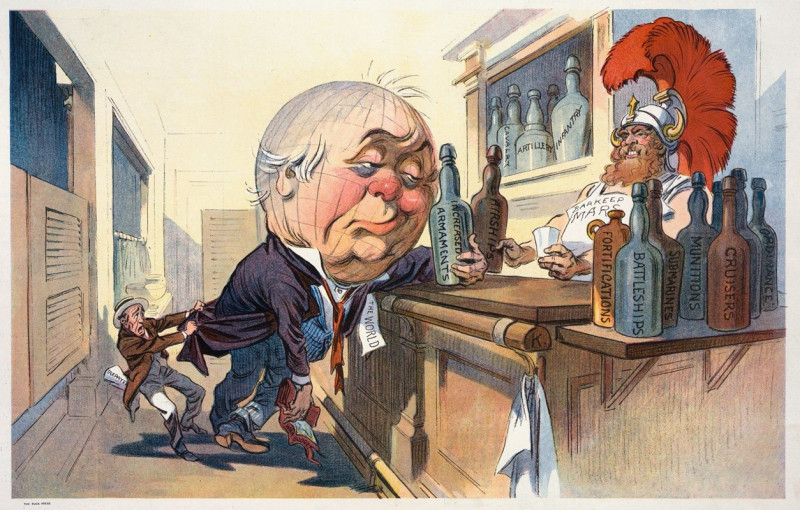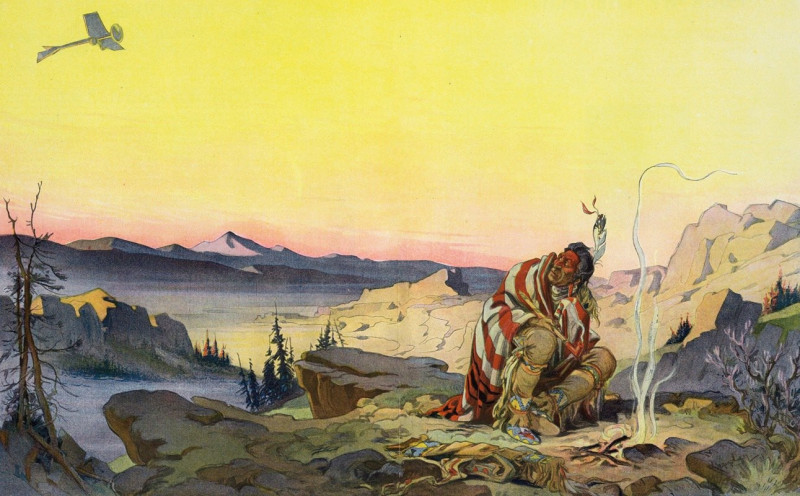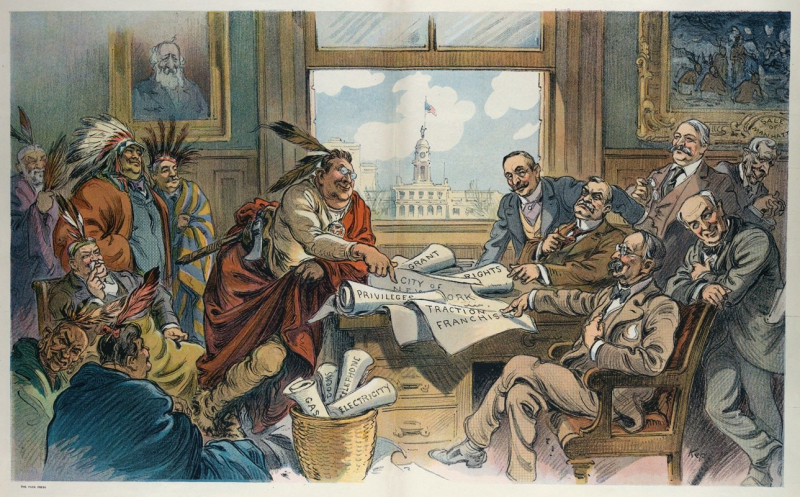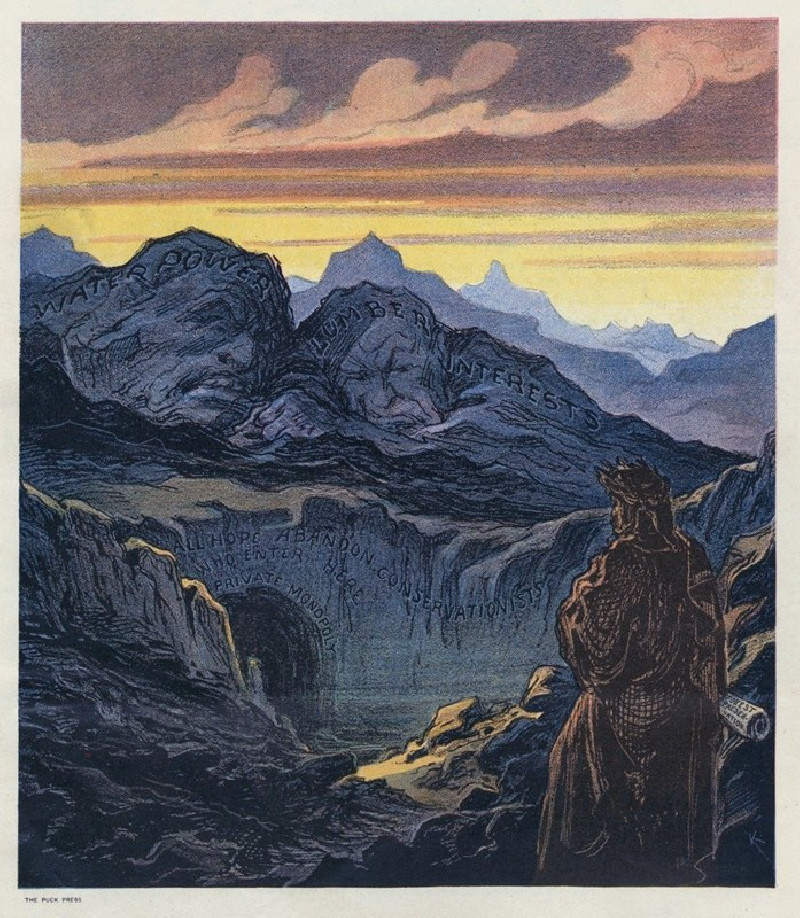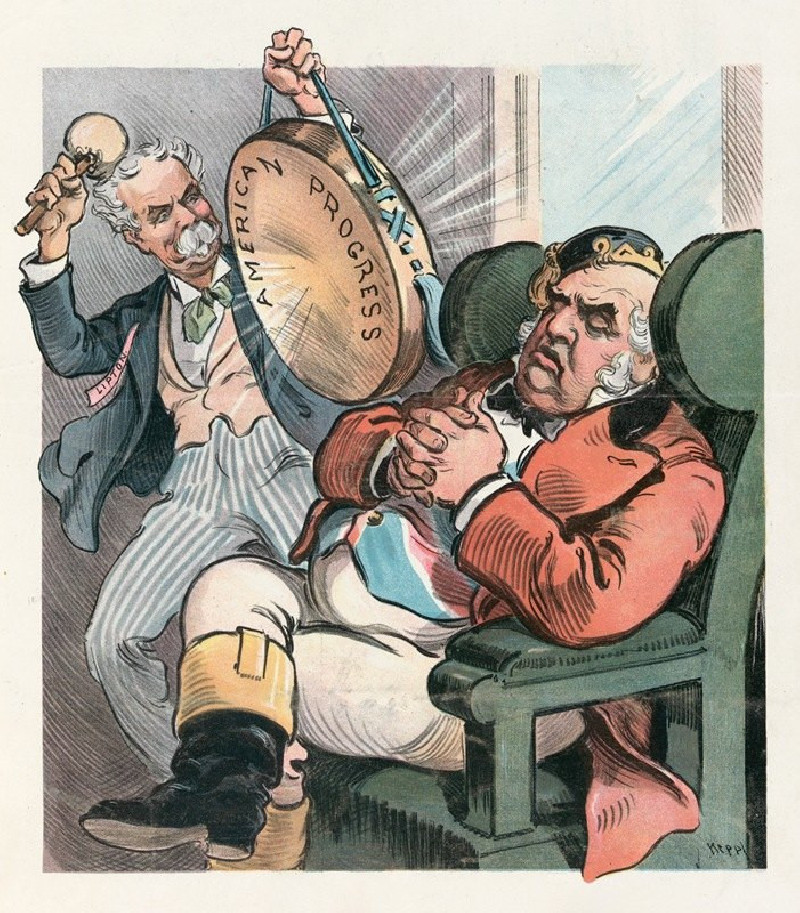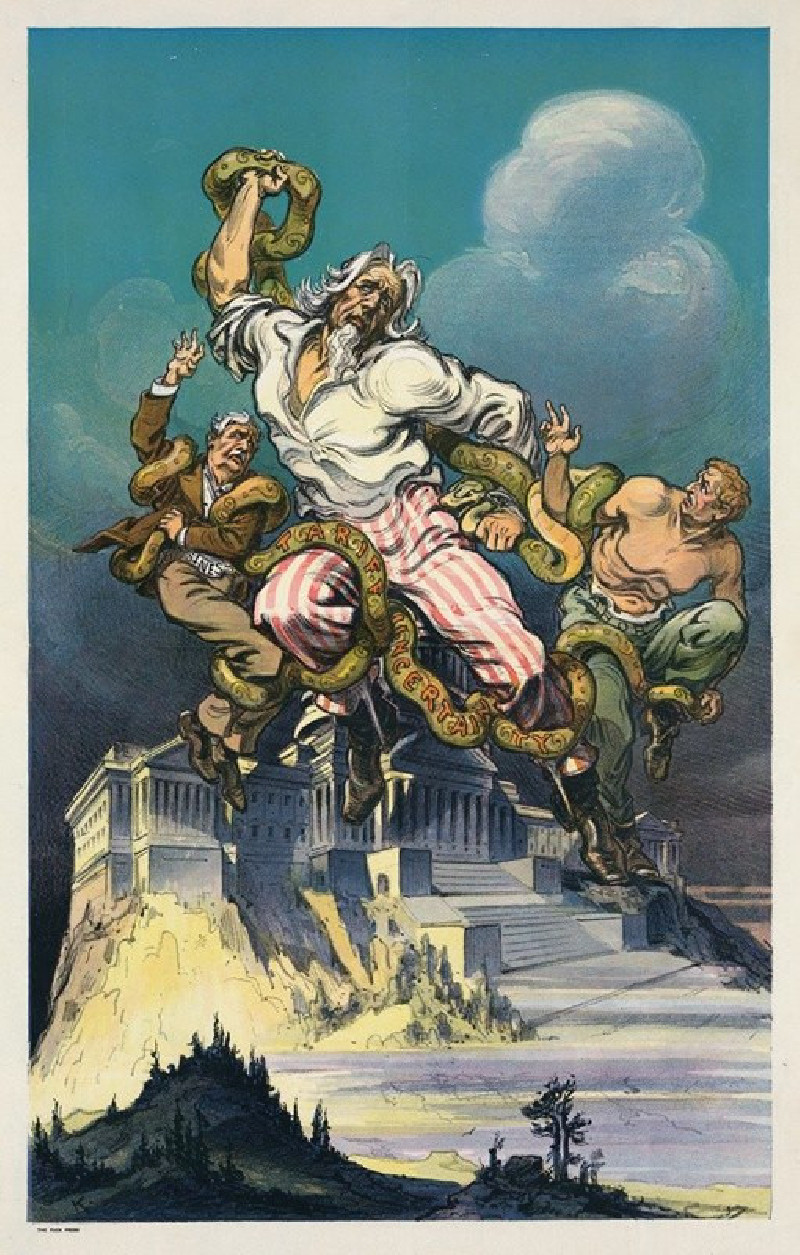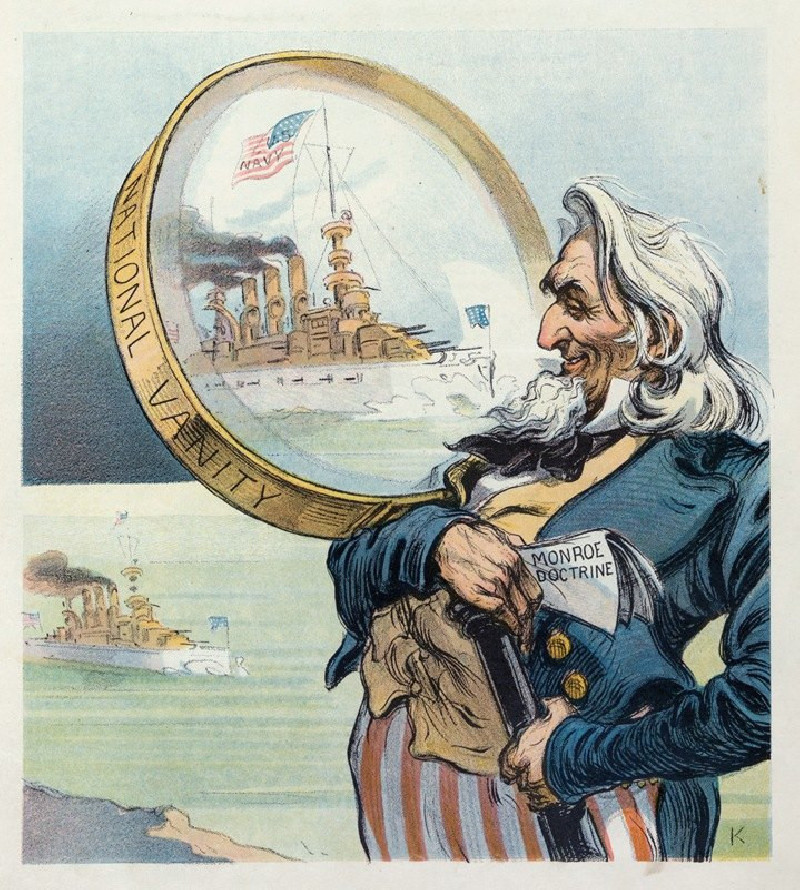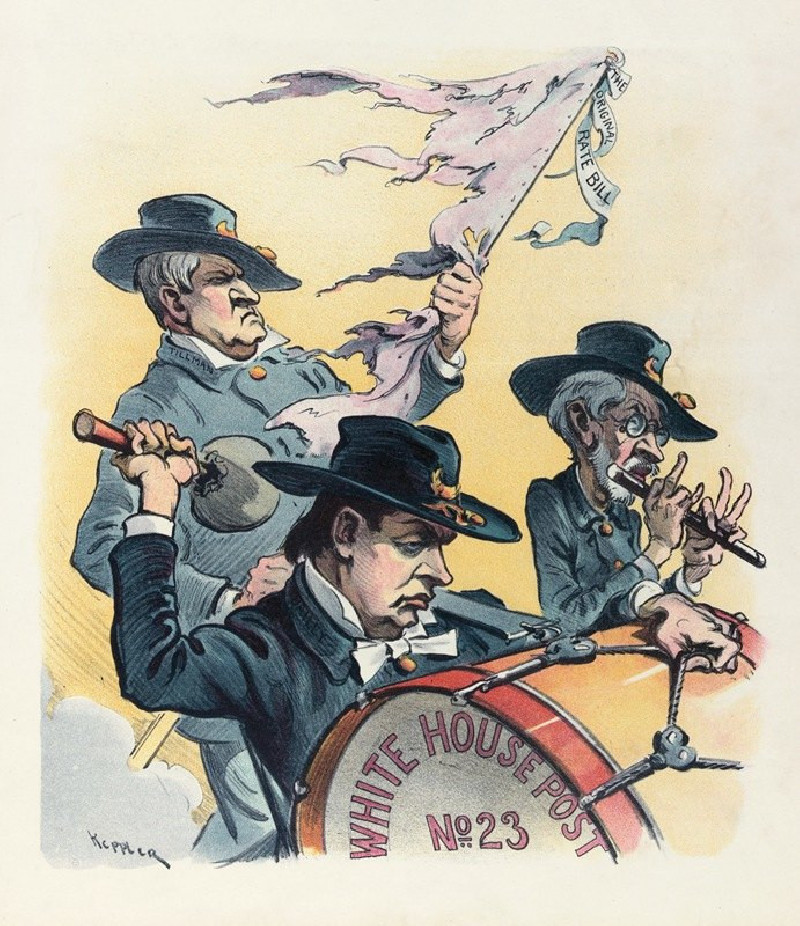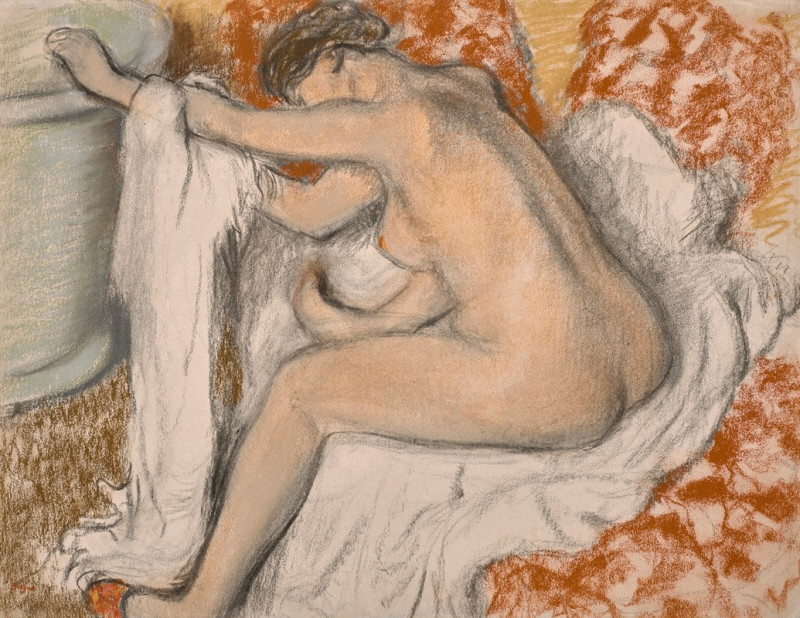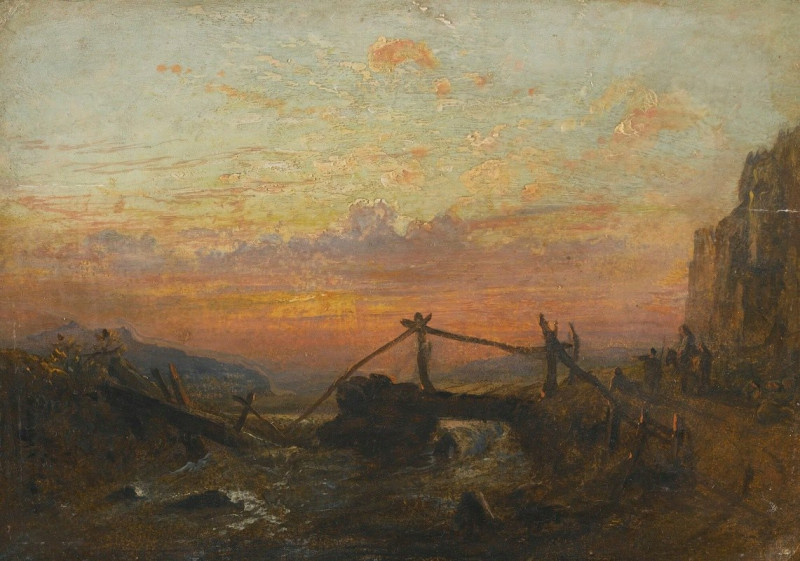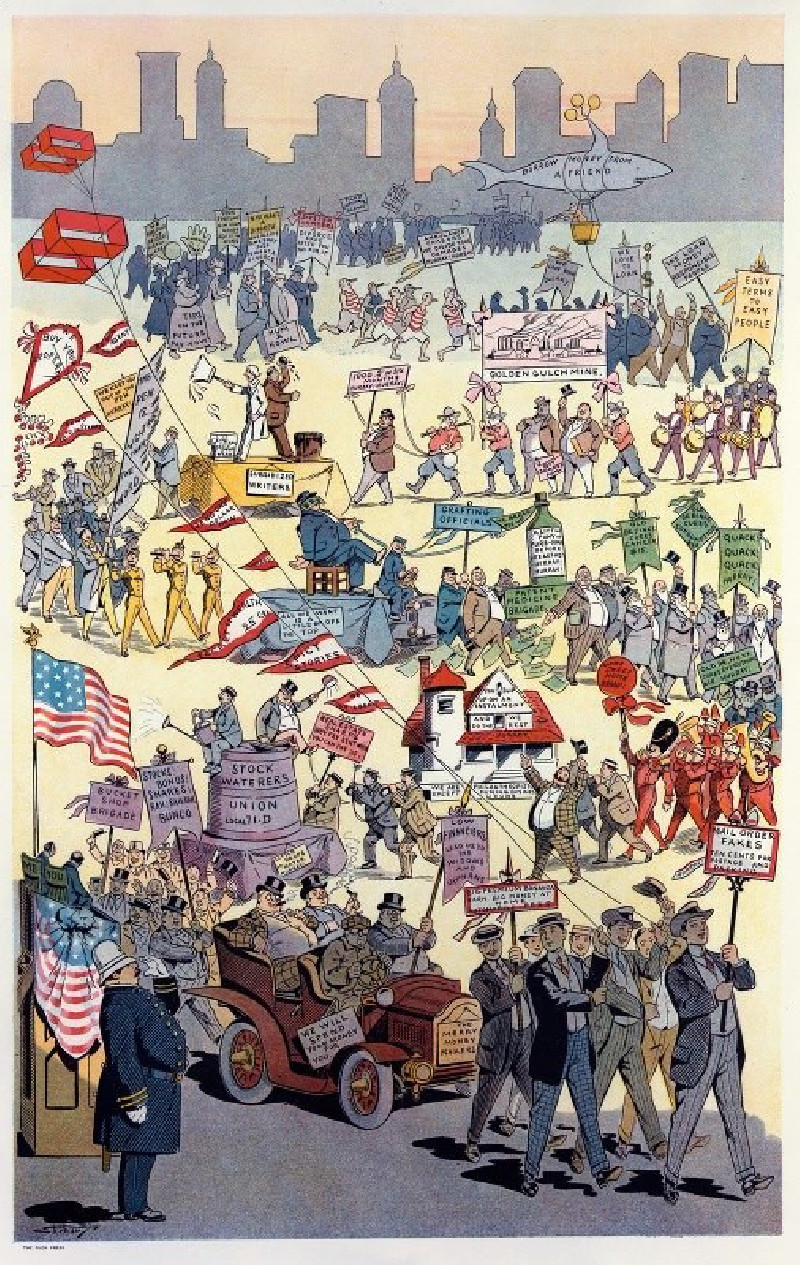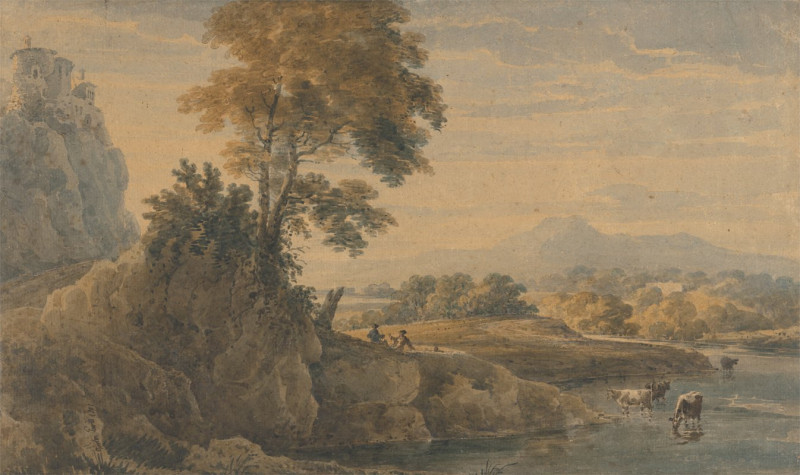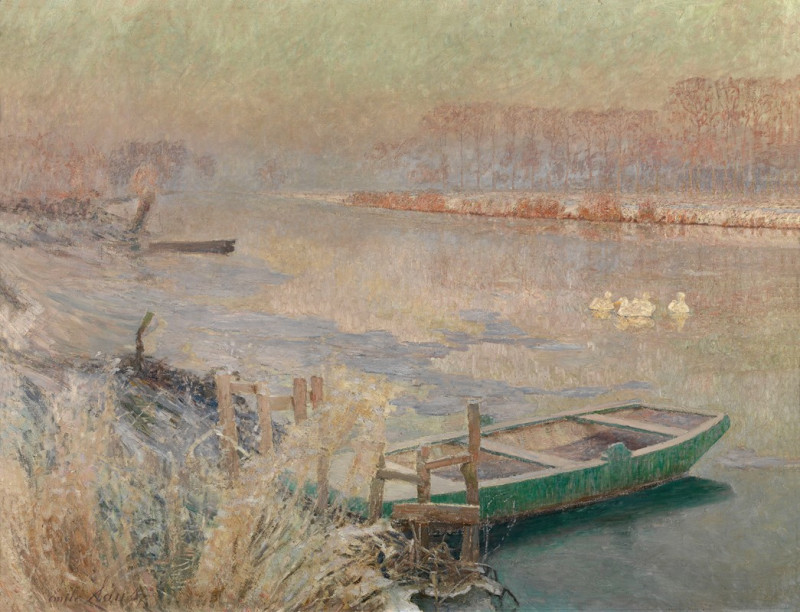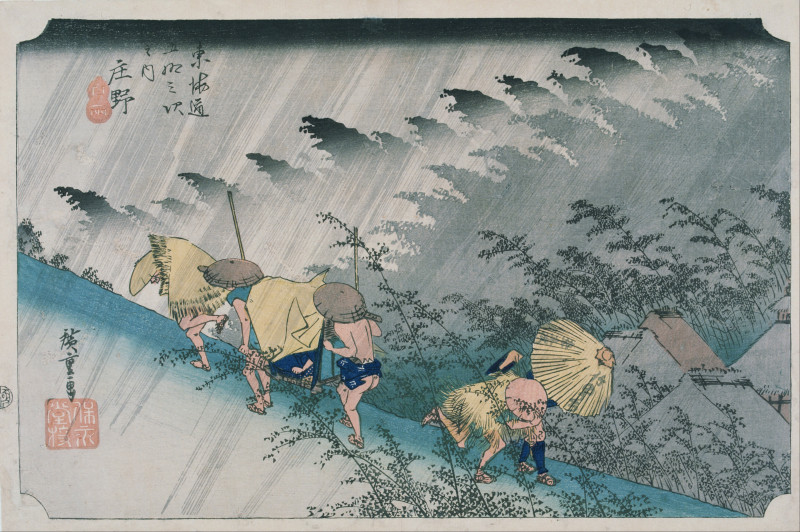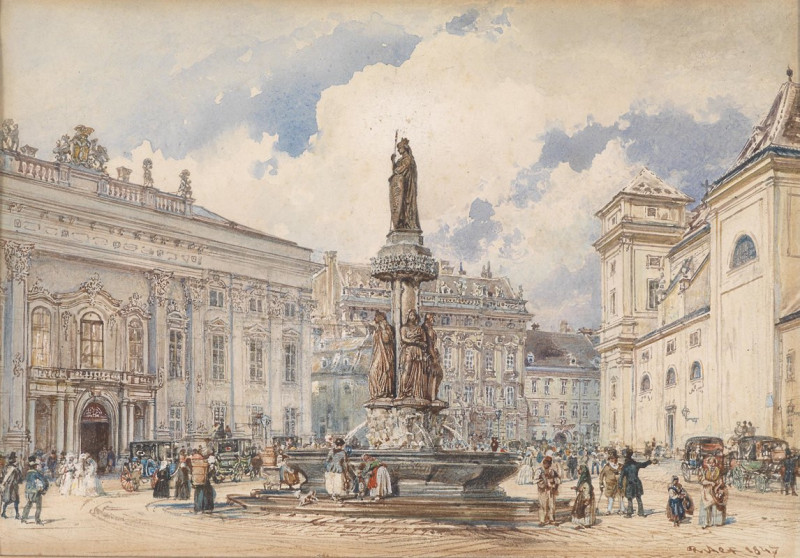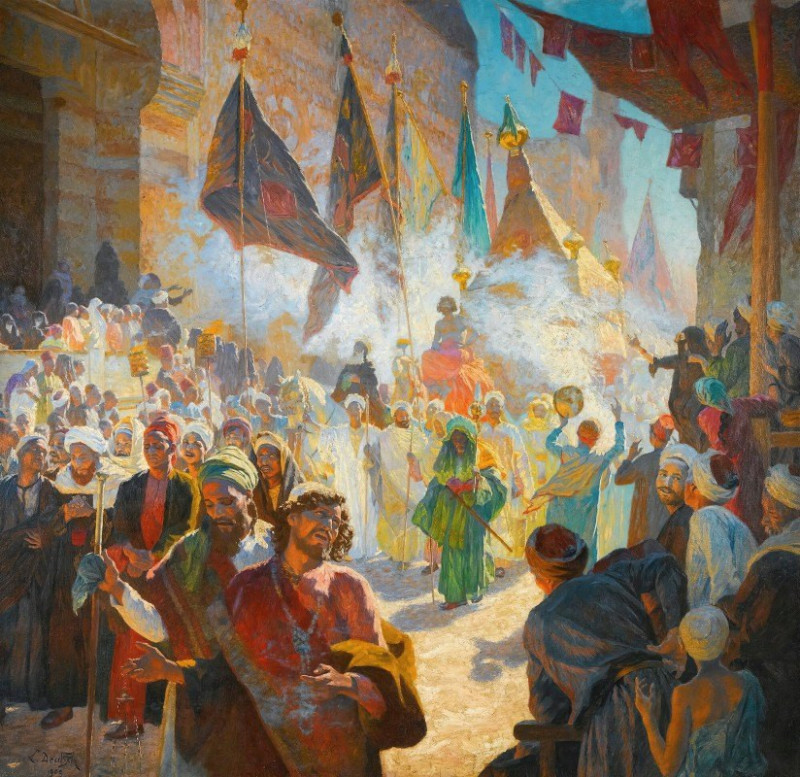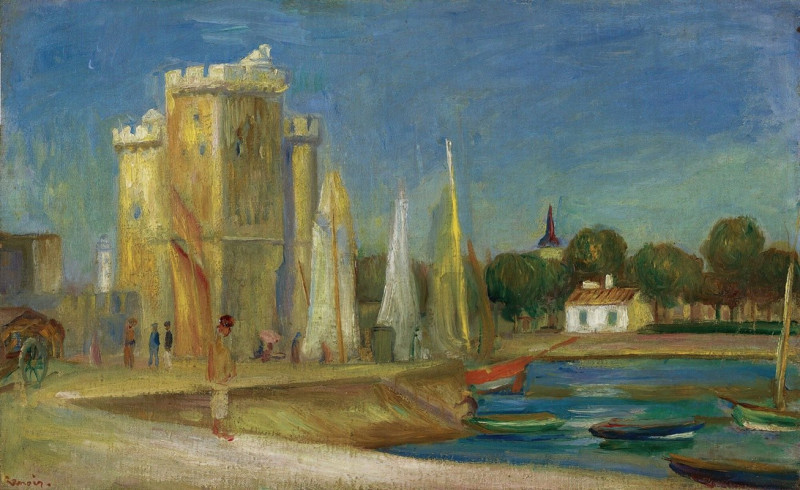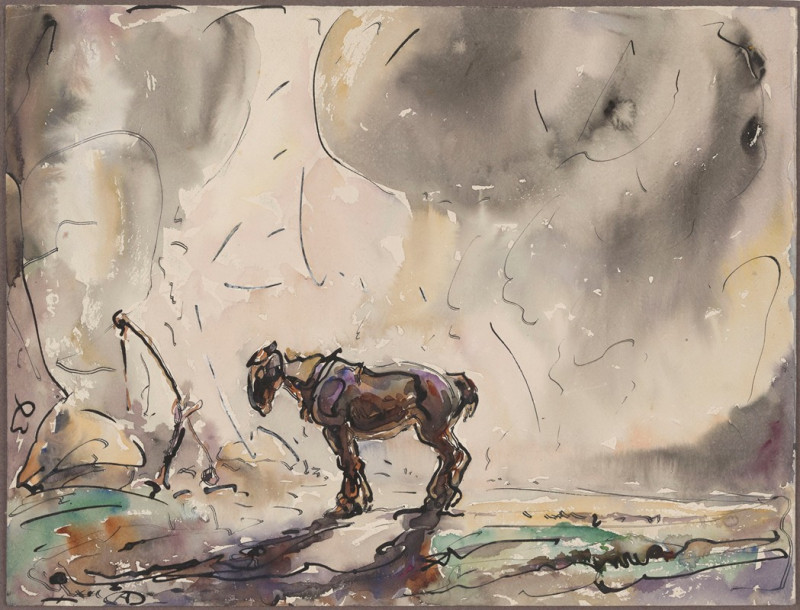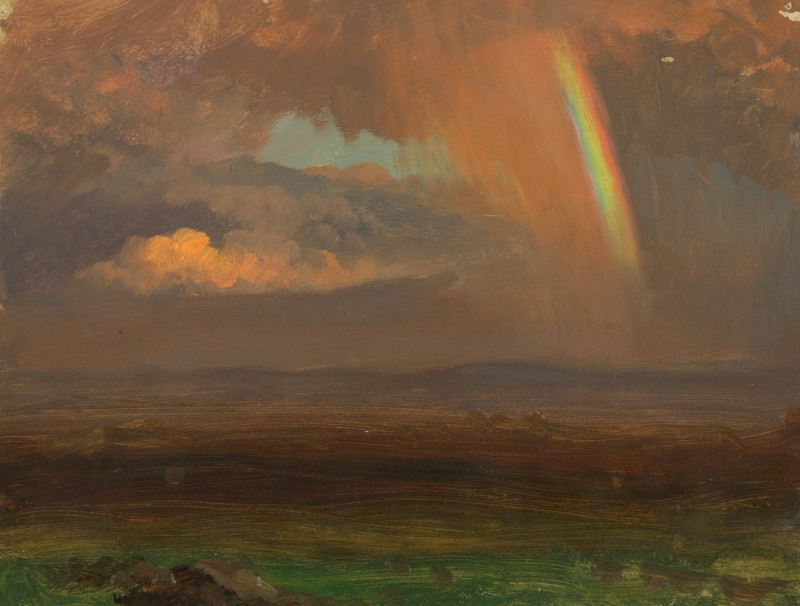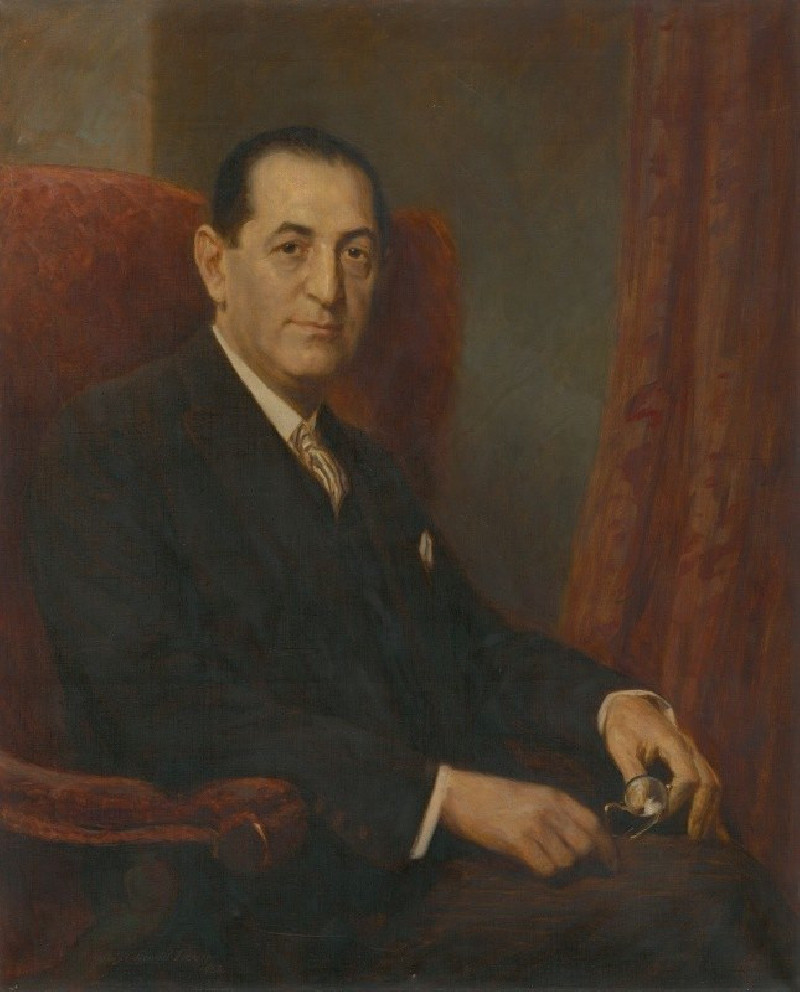McKinleyism (1897)
Technique: Giclée quality print
Recommended by our customers
More about this artwork
This vivid and engaging painting by Udo Keppler, titled "McKinleyism", was created in 1897 and provides a critical perspective on the political climate of the time. Rich in symbolism, this artwork captures the essence of the economic and political debates surrounding President William McKinley's era, particularly focusing on the tariff reforms.The central scene of the painting depicts the U.S. Senate entrance, marked prominently at the forefront. A well-dressed gentleman, who symbolizes the affluent and influential, confidently strides into the Senate, puffing a cigar indicative of the era’s industrial magnates. His detached demeanor towards the chaos around him underscores the criticism of the upper class's indifference to the struggles of the less fortunate.On the right, another figure, labeled with words “High Tariff” on a club, is being thrown out of a revolving door, suggesting the aggressive expulsion of policies not aligned with McKinley's high tariff stance. This reflects the political maneuvering required to uphold certain economic policies despite public or political opposition.Most strikingly, a disheveled and desperate man is being forcibly ejected; his expression and posture convey distress and resistance. This character likely represents the common American citizen or perhaps the smaller businesses hurt by high tariffs, struggling against policies that favor the wealthy elite.Overall, Udo Keppler's "McKinleyism" serves not only as a piece of political commentary but also as a rich historical document, providing insight into the tensions and divisions within American society and politics at the turn of the 20th century.
Delivery
Returns
Udo J. Keppler, since 1894. known as Joseph Keppler, Jr., was an American political cartoonist, publisher, and Native American advocate. The son of cartoonist Joseph Keppler (1838–1894), who founded Puck magazine, the younger Keppler also contributed to cartoons, and after his father's death became co-owner of the magazine under the name Joseph Keppler. He was also a collector of Native American artifacts.

